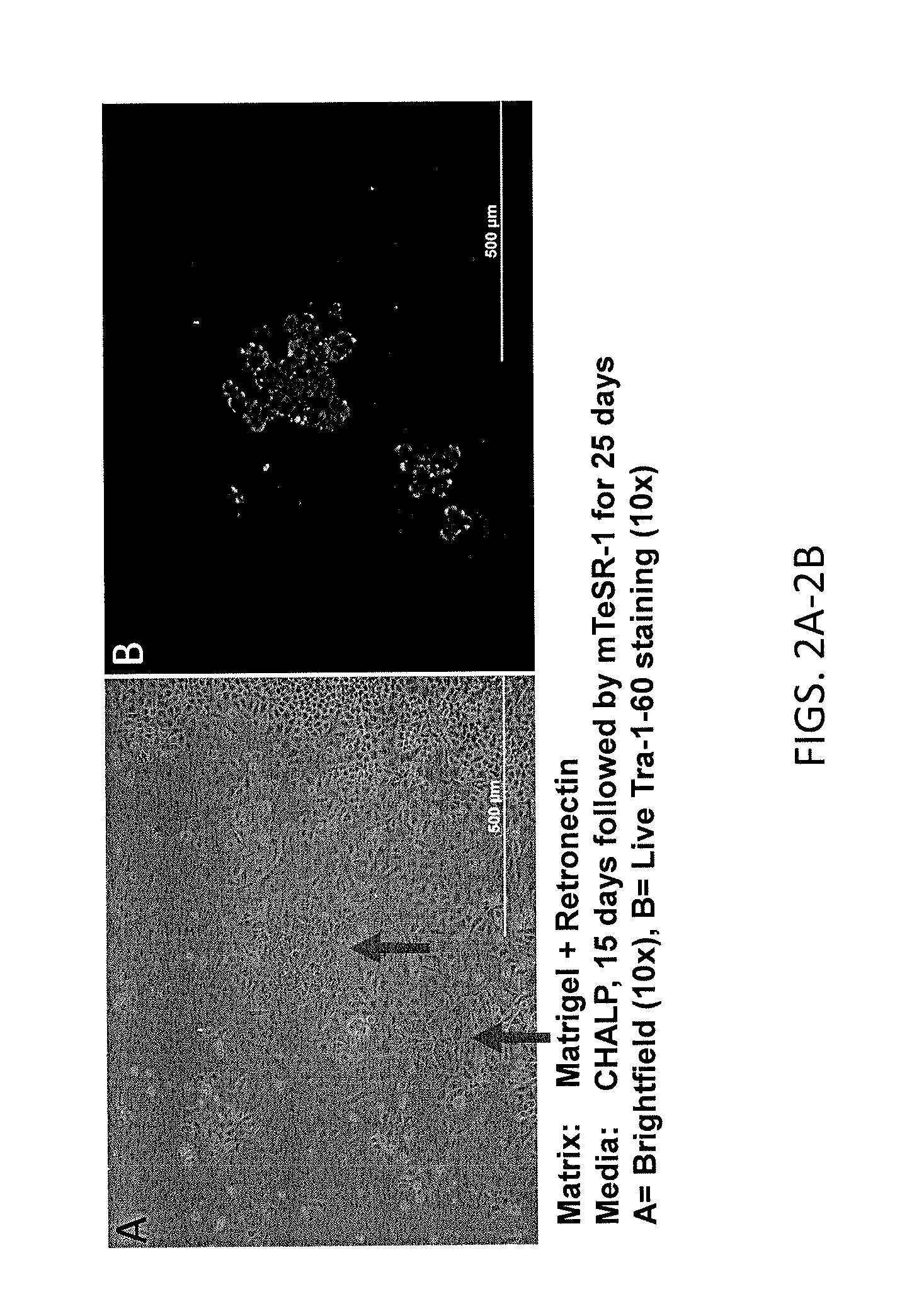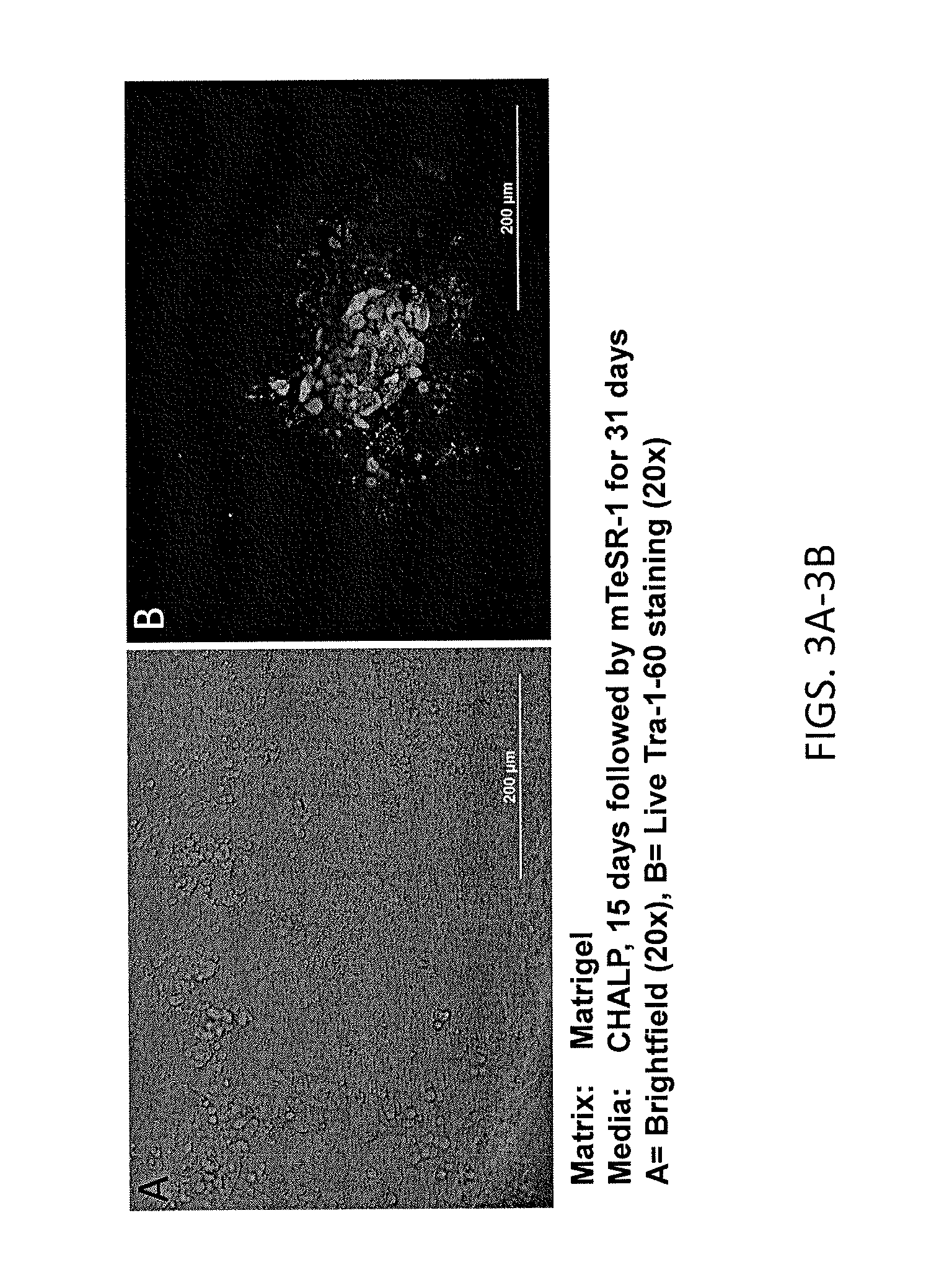Reprogramming immortalized b cells
a b cell and immortalization technology, applied in the field of molecular biology and stem cells, can solve the problems of low pluripotency of tissue stem cells, low reprogramming efficiency of methods, and limited application, and achieve the effect of increasing reprogramming efficiency
- Summary
- Abstract
- Description
- Claims
- Application Information
AI Technical Summary
Benefits of technology
Problems solved by technology
Method used
Image
Examples
example 1
Engineering Maxi EBV Particles for Reprogramming
[0299]If EBV-positive B cells prove more receptive to reprogramming, then B cells negative for EBV may be made more susceptible by infecting them with engineered EBV particles that may encode reprogramming factors. EBV is a member of the human herpesvirus family that is capable of packaging very large amounts of DNA (≦165 kb), a desirable feature from the standpoint of molecular engineering. We can take advantage of the features of EBV to generate recombinant EBV-based vectors that, in combination with a helper cell line, can be used to create Maxi-EBV particles that serve as vehicles for delivering proteins essential for reprogramming, transformation, etc. (Wendtner et al., 2003; Delecluse et al., 1999; Delecluse et al., 1998; Hettich et al., 2006). The following is an outline of the process that may be needed to derive such particles:
[0300]First, to generate an infection B cell line, a virus-defective helper cell line is created from...
example 2
Reprogramming Lymphoblastoid Cells Lines (LCLs) and Standard B Cells
1) Drive Mature B Cell Population Towards a Progenitor State or Isolate a Pax-5—Pro-B Cell Progenitor Cell Type for Reprogramming Trials.
[0301]Dedifferentiation of a mature B cell population to a progenitor cell type might need inhibition of Pax-5, Blimp1, Oct2 and Bob-1 or up-regulation of C / EBPα.
[0302]The following reagents / treatments are used to down regulate Pax-5 expression:
[0303]Cells are treated with Glucocorticoids (GCs) like Prednisolone sodium succinate or SN38 or SU11274 (Kanteti et al., 2009; Marie-Cardine et al., 2008) to down regulate Pax-5 expression (Rahman et al., 2001). The surviving cells are placed in IL-7 containing media to support the growth of pro-B cells.
[0304]B cells are treated with antisense RNA, small interfering RNA, ribozymes or transfected with expression cassettes encoding Pax-5-inhibiting oligonucleotide molecules. The same approach can be used for Blimp1, Oct2 and Bob-1. Down regul...
example 3
Reprogramming Lymphoblastoid Cell Lines (LCLs) without Preemptive Inhibition of Pax-5 or Over-Expression of C / EBPα-R Gene Using Defined Feeder-Free Conditions
[0319]The primary LCLs were obtained and expanded in RPMI medium containing 10-20% FBS. The cultured LCLs were transfected via electroporation with EBV-based episomal vectors containing reprogramming factors as described below.
[0320]The reprogramming was performed using three LCL cell lines transduced with three sets of reprogramming factors: 7 reprogramming factors (Oct4, Sox2; Nanog, Lin28, Klf4, c-Myc, SV40 Large T antigen), 5 reprogramming factors (Oct4, Sox2; Nanog, Lin28 and SV40 Large T antigen) or 4 reprogramming factors (Oct4, Sox2; Nanog and SV40 Large T antigen).
[0321]The optimal concentration of DNA for reprogramming was between 1-2 μg. The efficiency of transfection was estimated by using a relevant plasmid backbone containing a fluorescent marker like GFP.
[0322]The efficiency of transfection for GFP-containing pla...
PUM
| Property | Measurement | Unit |
|---|---|---|
| volume | aaaaa | aaaaa |
| volume | aaaaa | aaaaa |
| volume | aaaaa | aaaaa |
Abstract
Description
Claims
Application Information
 Login to View More
Login to View More - R&D
- Intellectual Property
- Life Sciences
- Materials
- Tech Scout
- Unparalleled Data Quality
- Higher Quality Content
- 60% Fewer Hallucinations
Browse by: Latest US Patents, China's latest patents, Technical Efficacy Thesaurus, Application Domain, Technology Topic, Popular Technical Reports.
© 2025 PatSnap. All rights reserved.Legal|Privacy policy|Modern Slavery Act Transparency Statement|Sitemap|About US| Contact US: help@patsnap.com



